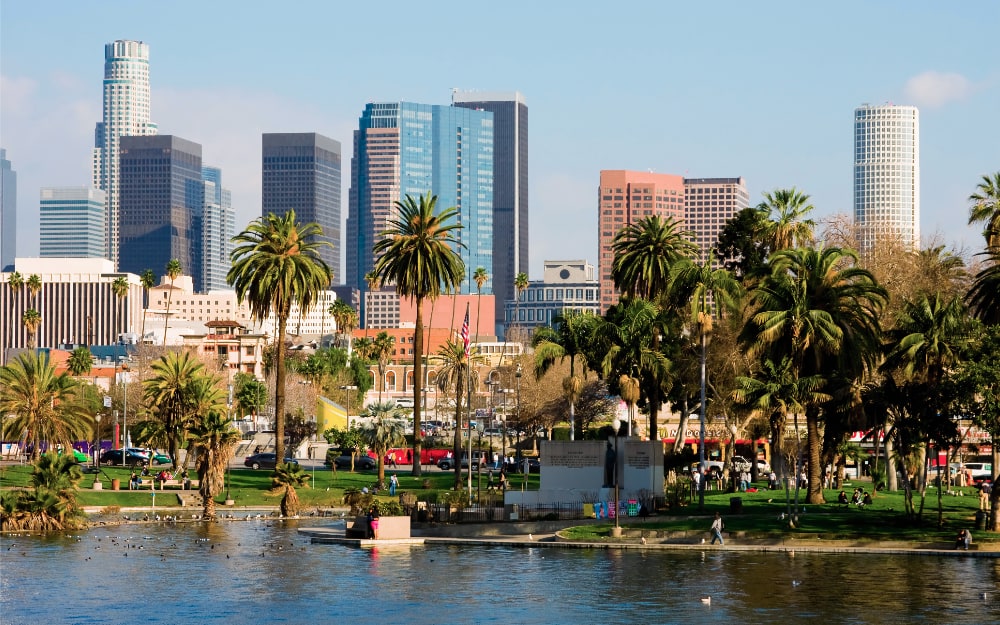Population in Urban Area, now
- World: 27th
- North America: 3rd
- United States: 2nd
Los Angeles Urban Area Population Graph
Los Angeles Population Review
Los Angeles is a city so famous it almost seems mythical. The home of Hollywood, Los Angeles straddles the Pacific Ocean on California’s western coast and is the entertainment capital of the world. Los Angeles is the most populous city in California and the second-most populous city in all of the United States with 4 million people in the city area and 12.5 million people in the urban area.
In the next fifteen years, experts predict that Los Angeles will only grow by another 1.5 million people. The Greater Los Angeles area is a sprawling city and the second-largest urban area in the United States that encompasses five counties and three metropolitan areas. Fun fact: Los Angeles was the first city in the US to reach 10 million residents.
Three times the population in tourists
While Los Angeles may not be a massive city population wise, it attracts an astronomical number of tourists. Each year, 50 million people travel to LA to see the sights—and that number continues to grow. Since 2017, Los Angeles has seen a 3.1% increase in the number of tourists—making it its eighth most successful year in a row for tourist visits. More than 1.8 million of those tourists are from Mexico and 1.4 million of them are from China. Tourism in LA supports more than 547,000 jobs and the Leisure & Hospitality sector of Los Angeles’ economy showed the largest year-over-year increase compared to the other 11 sectors in the county.
A multi-ethnic spot
Los Angeles is a deeply multiethnic city and defines itself the “cultural hub” of the Pacific Rim. Los Angeles does not have a majority population and its residents come from 140 different countries and there are 224 identified languages spoken in the city. 48% of the city’s population identifies as Hispanic or Latino, 26% identify as Caucasian, 15% as Asian or Pacific Islander. The rest of the population are split between African American, American Indian, or other.
A city of singles
Los Angeles ranks as one of the “most single” spots in the country, in fact, 55.8% of the adult population in the LA metropolitan area single (meaning divorced or never married). Experts are uncertain whether this is because Los Angeles is a career-focused city or because of the many universities. Whatever the reason, LA’s numbers are in contrast to the rest of the country, where—on average—only 44.3% of the population are single.
House affordability making it difficult to afford basics
Much of Los Angeles is covered in homes whose price range is far outside what many people from Los Angeles can afford. The median price of a home in Los Angeles is about $750,000 each. Unfortunately, the average income is about $70,000 and comes nowhere close to what people would need to buy these homes. While there are small enclaves of extremely wealthy people in certain sections of Los Angeles, up to 40% of Angelenos struggle to make ends meet. Not coincidentally, the almost half of the households in LA County spend more than 30% of their income on their mortgage or rent.
An artistic city
While many people think only of Hollywood when they think of LA, Los Angeles is actually at the forefront of several growth industries. One of these is actually art. In the LA metropolitan area, there are more than 23,000 art jobs. This makes Los Angeles the leading artistic center in the United States, surpassing the former champion, New York City. What this means is that Los Angeles has both a larger number of and more concentrated groups of artists than all of New York City. While some of these jobs may be ‘traditional’ artists, many of these jobs are actually directly related to the movie industry.
